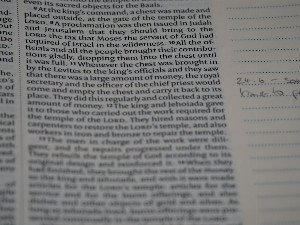Krista Collier-Jarvis
…of the Dead: The Rhizomatic Turn in Tales of the Zombie
Philosophy
Scaffold: Journal of the Institute of Comparative Studies in Literature, Arts and Culture
Introduction
…of the dead: the rhizomatic turn in tales of the zombie . Explore the rhizomatic turn in zombie narratives with the "rhizombie" framework. It links contagion to racial oppression & climate crises, drawing on Deleuze & Haraway to reveal complex, interconnected threats.
Abstract
Contagion increasingly overlays other social concerns infecting our world, such as racial oppression and climate crises, and thus renders all other issues invisible. The rhizombie, however, is a theoretical framework that posits contagion as interconnected with these other issues in complex, rhizomatic entanglements. The rhizombie is informed by a combination of Gilles Deleuze and Pierre-Félix Guattari’s rhizome and Donna Haraway’s multispecies work. Each of these methodologies propose a multiplicity, but they differ in when, where, how, and with whom their multiplicities manifest. Throughout their nearly hundred-year history, zombie narratives have evolved to reflect a need for multiplicity thinking and thus requiring new theoretical approaches. The combination of increased globalization, increased diversity in horror, and the inability to differentiate when and where one contemporary issue begins or ends results in the zombie’s body becoming largely rhizomatic. The rhizombie is thus not simply the zombie as an allegory of singular, individual threats, in the manner that the figure of the zombie has been so well used and analysed since they first shuffled into our narratives (as, for example, contagion, capitalism, climate change, consumption, or systems of racialized oppression). Understanding the zombie as rhizomatic highlights the figure as an embodiment of the complex entanglements of all of these threats and more, and how they feed on and in turn reproduce each other: threats of the past, present, and future; biological threats that are human, animal, plant, fungi, and pathogen; social threats of racial oppression, colonialism, political paranoia, and terrorism; and anthropocentric threats of viruses and climate crises. The rhizombie exists in the interplay of all of these and more, a multiplicity of metaphors shuffling—and sometimes galloping—as both individuals and hordes.
Review
The paper, "...of the Dead: The Rhizomatic Turn in Tales of the Zombie," introduces a compelling and timely theoretical framework, the "rhizombie," designed to re-evaluate the evolving figure of the zombie in contemporary narratives. Moving beyond established allegorical interpretations that often reduce the zombie to a singular metaphor for issues like contagion, capitalism, or racial oppression, the authors posit the rhizombie as an embodiment of the complex, interconnected, and often indistinguishable entanglements of multiple global crises. By drawing upon Gilles Deleuze and Pierre-Félix Guattari’s concept of the rhizome and Donna Haraway’s multispecies work, the framework seeks to provide a robust lens for understanding the zombie's capacity to represent a multiplicity of threats that feed on and reproduce each other. A significant strength of this proposed work lies in its ambitious theoretical synthesis and its potential to unlock new critical perspectives within horror studies and broader cultural analysis. The "rhizombie" offers a sophisticated approach to grappling with the increasing globalized and diverse landscape of zombie narratives, which often blur the lines between distinct social, biological, and environmental anxieties. The integration of Deleuze and Guattari's emphasis on non-hierarchical connection with Haraway's focus on interspecies relations promises to reveal profound interdependencies – from human and non-human biological threats to deep-seated social oppressions and anthropocentric crises. This framework is particularly well-suited to exploring how the zombie figure simultaneously functions as an individual and a horde, reflecting the multifaceted and self-perpetuating nature of contemporary threats. While the abstract powerfully articulates the theoretical underpinnings and the scope of the "rhizombie," a full development of this concept will benefit from rigorous analytical application. Future iterations should focus on demonstrating how this rhizomatic reading practically differentiates itself from a multi-allegorical approach, perhaps through specific textual analyses of diverse zombie narratives. It would be beneficial to see how the multiplicities proposed by Deleuze/Guattari and Haraway are specifically operationalized within the framework, addressing any potential tensions or nuanced convergences between their respective philosophical and ethical stances. Providing concrete examples of how the "rhizombie" illuminates the interplay of various threats – past, present, biological, social, and anthropocentric – will be crucial in solidifying its contribution as a distinct and powerful analytical tool for cultural critique.
Full Text
You need to be logged in to view the full text and Download file of this article - …of the Dead: The Rhizomatic Turn in Tales of the Zombie from Scaffold: Journal of the Institute of Comparative Studies in Literature, Arts and Culture .
Login to View Full Text And DownloadComments
You need to be logged in to post a comment.
Top Blogs by Rating
Big Data's Unintended Conseque...
By Sciaria
Beyond the Stereotype: Unpacki...
By Sciaria
The Silent Language of Your Bo...
By Sciaria
Favorite Blog
Beyond the Chart: The Indispen...
By Sciaria
Ops Debt: Unmasking the Silent...
By Sciaria
Identical Twins Aren't Identic...
By Sciaria





